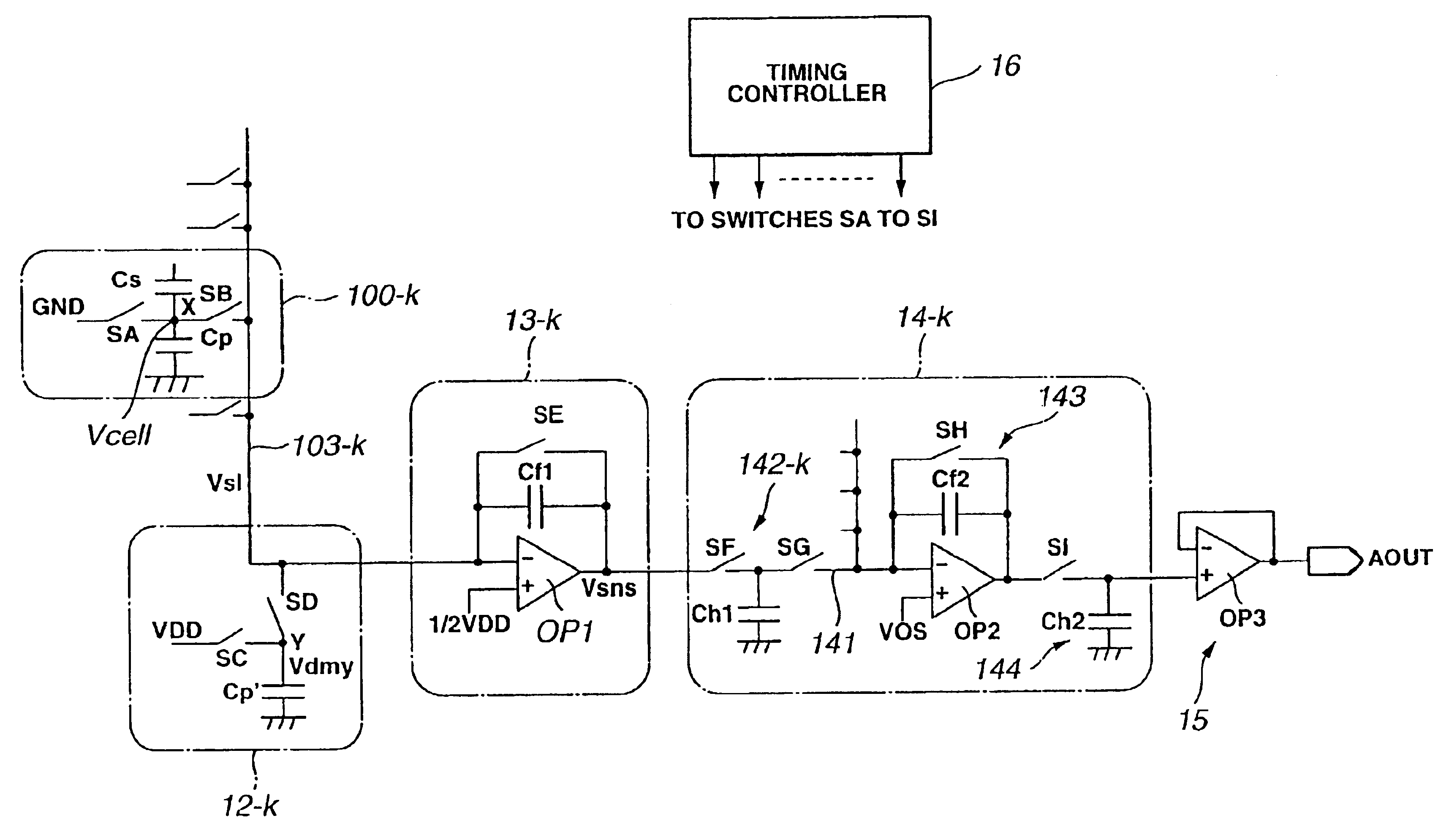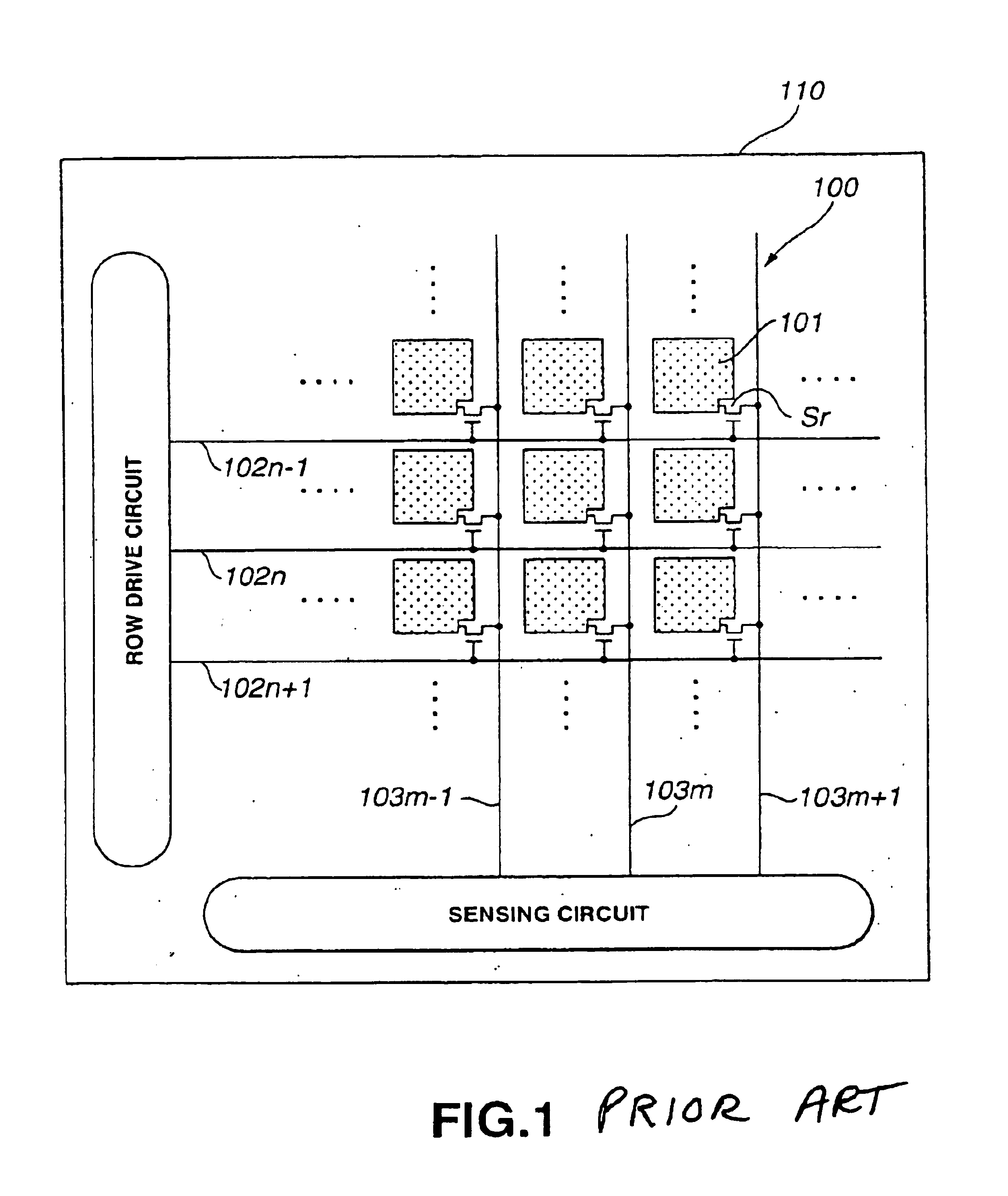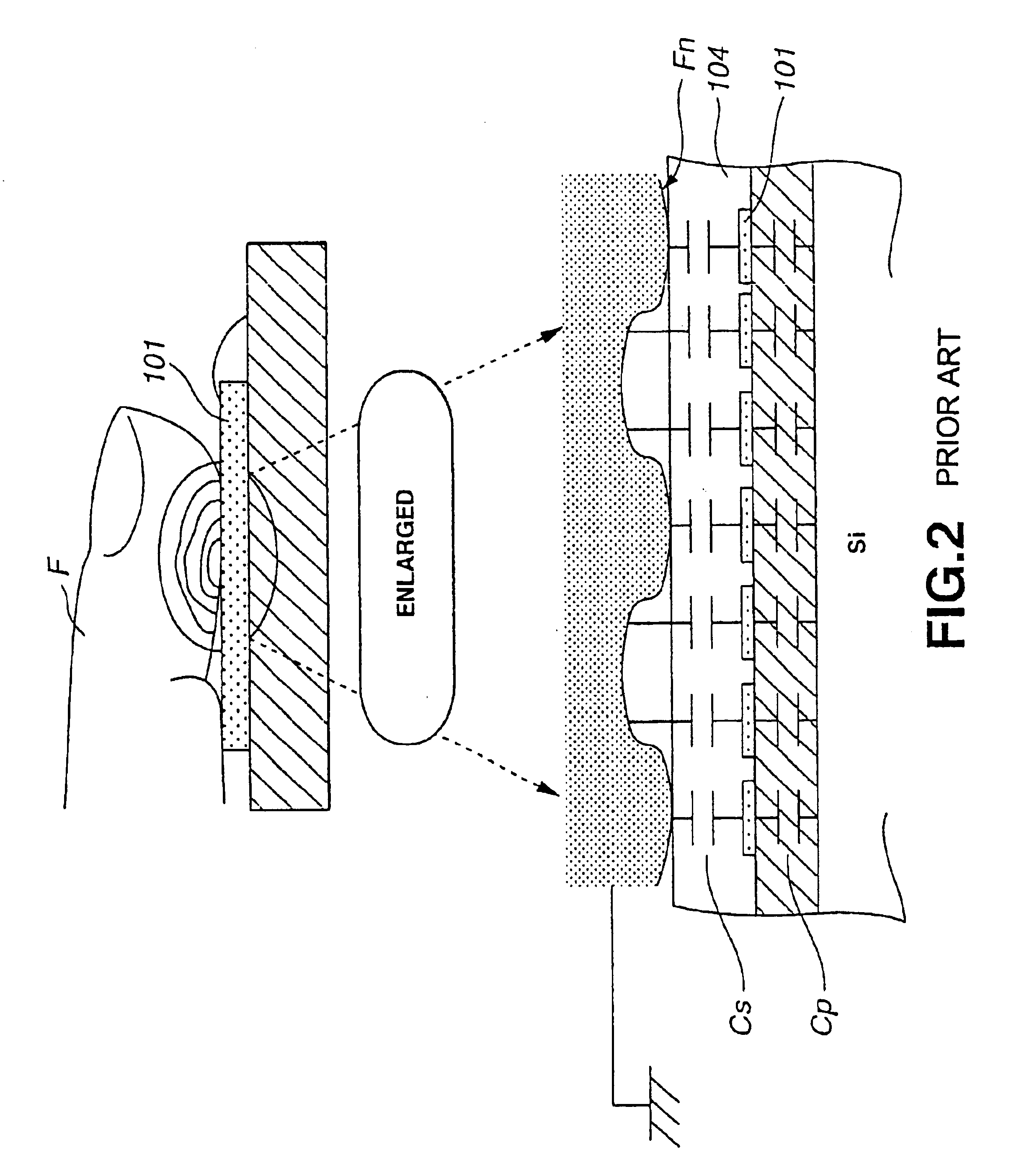Electrostatic capacitance sensor and fingerprint collator comprising it
a capacitance sensor and electrostatic technology, applied in the field of capacitance sensors and fingerprint identification systems or dactyloscopy systems, can solve the problems of poor sensitivity, poor sensitivity, poor sensitivity, etc., and achieve the effect of improving durability and improving sensitivity
- Summary
- Abstract
- Description
- Claims
- Application Information
AI Technical Summary
Benefits of technology
Problems solved by technology
Method used
Image
Examples
Embodiment Construction
[0034]The present invention will be described in detail below, concerning an embodiment of the capacitance sensor and an embodiment of the fingerprint sensor in which the capacitance sensor is applied, with reference to the accompanying drawings.
[0035]According to the present invention, the capacitance sensor is constructed as shown in FIG. 6. As shown in FIG. 6, the capacitance sensor includes a sensor array 11, parasitic capacitance cancel circuit 12, sensing circuit 13, parallel-serial conversion circuit 14 and an output circuit 15. The sensor array 11 is formed from an array including m columns by n rows of sense electrodes forming each sensor cell and laid on the surface of a semiconductor, as in FIG. 1. For the simplicity of the illustration and explanation, there is shown the cell circuit constructed of only one row of sensor cells 100-1, . . . , 100-k, . . . , 100-m.
[0036]Note that the sensor array 11 has column sense lines 103-1, 103-k and 103-m laid in each column and row...
PUM
 Login to View More
Login to View More Abstract
Description
Claims
Application Information
 Login to View More
Login to View More - R&D
- Intellectual Property
- Life Sciences
- Materials
- Tech Scout
- Unparalleled Data Quality
- Higher Quality Content
- 60% Fewer Hallucinations
Browse by: Latest US Patents, China's latest patents, Technical Efficacy Thesaurus, Application Domain, Technology Topic, Popular Technical Reports.
© 2025 PatSnap. All rights reserved.Legal|Privacy policy|Modern Slavery Act Transparency Statement|Sitemap|About US| Contact US: help@patsnap.com



